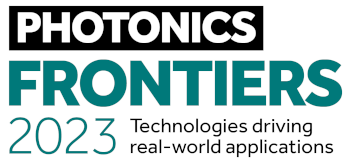Lidar technology can reduce severe accidents by up to 20%, according to research by Volvo Cars.
The carmaker’s research from 2022 indicates that adding lidar to an already safe car can reduce accidents with severe outcomes by up to 20%, and overall crash avoidance can be improved by up to 9%.
The research was based on scenario frequencies using data collected by the Volvo Cars Traffic Accident Team, which has investigated every serious accident involving a Volvo occurring within a 100km radius of Gothenburg, Sweden, since 1970. The purpose of their work is to learn more about accidents and their consequences, knowledge that can subsequently be applied in product development.
Advances in the optic and photonic components that enable lidar have been instrumental in the safety boost it promises. But the challenge for lidar companies is not just to make a machine that can compete with the human eye, but to make something that can be produced at scale, and at a cost that is appropriate for the vehicle it sits in.
Multi-junction VCSEL technology
A product that works towards these requirements is Velodyne’s Velarray H800, which is compact enough to be integrated within the windscreen of the car. It is reportedly the first lidar system that integrates two illumination modules, for both short- and long-range measurements, in the same unit, reducing the number of devices needed by each vehicle. The H800, marketed at $500 and measuring 80 x 55 x 90mm, integrates Velodyne’s micro-lidar array (MLA) based on edge emitting lasers (EELs) with a VCSEL near-illumination module to cover distances from 10 centimetres to 200 metres.

The MLA engine takes time-of-flight measurement of obstacles at long range, up to 200m. It consists of eight EELs, eight photodiodes and optical elements that are all assembled on the same substrate measuring just 14.1mm x 8.9mm x 2.05mm.
But to analyse scenes at closer distances from 10 centimetres to 20 metres, which is typically difficult to achieve using EELs, a VCSEL-based illumination module is integrated above the MLA. The technology is similar to that used by smartphone facial recognition software, but much higher powers are needed to send light up to 20 metres into the environment. The innovative aspect here is the five-junction emission structure on the VCSEL die.
VCSELs typically generate light from a single layer, but stacking multiple layers allows VCSELs to better amplify optical power, increasing gain. This is because fewer distributed Bragg reflector layers need to be deposited on the VCSEL to trap light and enable laser gain. Fewer layers lowers the internal resistance, boosting efficiency. This, in turn, reduces the electrical power needed to attain a particular optical power.
Velodyne uses the Osram 5J multijunction VCSEL 905nm, which uses dies from Osram subsidiary Vixar, the first company to commercialise multi-junction VCSEL technology.
The possibility to create much more powerful illumination profiles at a reduced size opens the doors for lidar to be used in other applications where size, weight and cost are important.
This technology is analysed in a teardown report, Velodyne Short and Long Range Lidar with VCSEL and EEL (April 2023) by Yole SystemPlus, part of Yole Group.
Silicon photonic gains
To reduce size and cost further, a small minority of lidar companies are banking on silicon photonics, an approach that puts lidar on microchips. New-York based firm Voyant is one such company, which has secured $15.4m in funding to commercialise its frequency-modulated continuous-wave (FMCW) technology. FMCW lends itself better to chip integration and is the technique of choice for chip-scale lidar companies.
Intel is also looking at silicon photonic lidar, saying it wants to put autonomous cars on the roads by 2025. But not everyone thinks it’s time to switch. Yole Group estimates that of the 80 or so lidar companies operating, about 80% are still using time-of-flight.
One challenge for FMCW is that it requires a very stable laser. In time-of-flight, increasing the laser power increases the sensing range, but because FMCW uses the phase and frequency of photons to measure distance, the coherence length of the laser sets a maximum sensing distance. Single-frequency operation can be achieved using gratings, which select a single laser mode, though this adds complexity and cost to the lidar compared with pulsed operation. Balance photodetectors, which mix the local and returning signal and extract the phase and frequency, also entail additional hardware. And while the peak power might be lower than in time-of-flight, the laser still needs an average power of a few hundred milliwatts to overcome losses in the silicon waveguides.
In addition, while silicon chips are cheaper than discrete FMCW components, photons are trickier to manipulate on a tiny scale than electrons. But FMCW offers many advantages, such as high precision, low cost and scalability.




